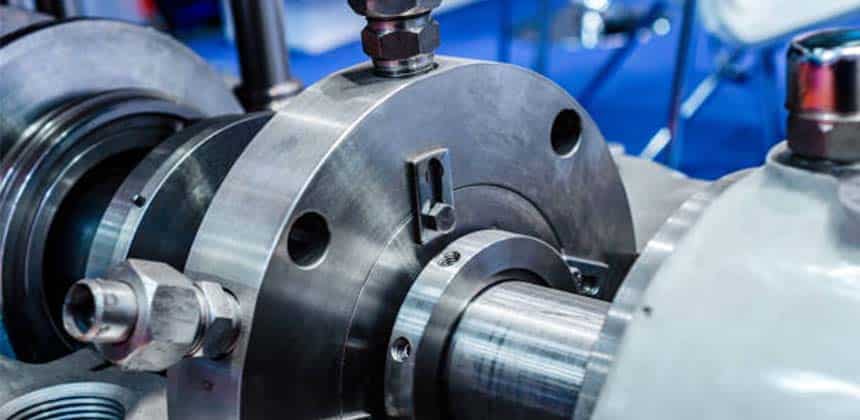Mechanical Seal Types
What is a mechanical seal?
Mechanical seals are commonly used in rotating equipment such as pumps, compressors, mixers and centrifuges to prevent leakage of liquids or gases. Mechanical seals are usually installed at the bearing end of these rotating equipment, at the joint between the shaft and the equipment housing. Specifically:
- Pumps: Mechanical seals are usually installed at the bearing end of the pump, between the pump shaft and the pump casing. This effectively prevents the liquid inside the pump from leaking to the outside, and prevents external substances from entering the pump.
- Compressor: In a compressor, the mechanical seal is located between the compressor shaft and the casing, preventing leakage of gas from the compressor to the outside environment.
- Mixers: In rotary mixers, mechanical seals are usually mounted on the bearing end of the mixer shaft to prevent leakage of the mixture.
- Centrifuges: Mechanical seals are used in centrifuges to prevent leakage of liquids or gases and are usually located at the bearing end of the centrifuge.
The purpose of mechanical seals is to provide an effective seal in the operation of rotating equipment, preventing fluid or gas leakage and ensuring equipment reliability and safety. They are an important component in industrial equipment and help maintain the proper operation of the equipment.
Basic elements of a mechanical seal
- A mechanical seal is a sealing device used to prevent the leakage of liquids or gases, which usually consists of several basic elements to ensure the effectiveness and reliability of the seal. These basic elements include:
- Sealing Rings (Sealing Faces): Sealing rings are the core component of a mechanical seal and are usually made of a hard material (e.g., ceramic) and are used to form a seal by making contact with a shaft or fixed component. There may be one or more sealing rings, depending on the type of mechanical seal and the design.
- Springs: Springs are usually located behind the seal ring and provide sufficient sealing force to keep the seal ring in contact with the shaft or stationary component. The design of the spring can vary depending on the operating conditions and requirements to ensure that the seal ring maintains the proper contact pressure.
- Packing (Secondary Sealing Element): In some mechanical seal designs, packing is used as a secondary sealing element that fills the space between the seal ring and the shaft to prevent liquid leakage. The packing is usually a soft material such as rubber or polymer.
- Seal Housing or Cartridge: The seal housing is the support structure for the mechanical seal, which holds the seal ring, spring and other components together and provides a platform for mounting and securing them. In block type mechanical seals, the entire sealing device is usually pre-installed in the seal housing.
- Lubricating Fluid or Gas: In some mechanical seal designs, a lubricating fluid or gas is introduced between the seal ring and the shaft to reduce friction and wear. Gas lubricated mechanical seals typically use gas as the lubricating medium.
There are other components:
- Stationary Ring: The stationary ring is a sealing ring in a mechanical seal, usually mounted on a fixed part of the equipment. It forms a sealing interface with the dynamic ring to prevent liquid or gas leakage.
- Rotating Ring: The rotating ring is another sealing ring that is attached to a rotating shaft. It forms a sealing interface with the static ring to ensure sealing performance and prevent leakage of liquids or gases.
- Pressure Cover: The pressure cover is a component that secures the sealing ring to the mechanical seal and provides the proper pressure to maintain sealing performance.
- Drive Collar: The drive collar is attached to the moving ring and transmits rotational motion to the moving ring, thereby bringing the moving ring into close contact with the static ring to form an effective sealing interface.
- Spring: The spring is an important component of a mechanical seal, providing sufficient sealing force to keep the sealing ring in close contact to prevent liquid or gas leakage.
- Locating Ring: The locating ring is used to ensure that the static and dynamic rings are in the correct position to maintain the accuracy and stability of the seal interface.
- Sleeve: A sleeve is a jacket that protects the bearing and shaft while providing additional sealing support to prevent liquid or gas leakage.
- Rotating Seal Ring: This is a sealing ring on the dynamic ring that forms a sealing interface with the static ring to ensure sealing performance between the dynamic and static rings.
- Stationary Seal Ring: The Stationary Seal Ring is a sealing ring on the static ring that forms a sealing interface with the dynamic ring to ensure sealing performance between the static and dynamic rings.
These components work together to form a mechanical seal sealing system that prevents liquid or gas leakage and maintains the normal operation of the equipment.

What are the types of mechanical seals?
Mechanical seals are devices used to prevent the leakage of liquids or gases in rotating equipment, and there are several types, each suitable for different applications and operating conditions. The following are some common types of mechanical seals:
Single-spring mechanical Seal
This is one of the most common types of mechanical seals, which consists of a sealing ring and a spring to keep the sealing ring in close contact with the shaft. It is suitable for some general applications such as pumps, mixers, etc.
The single face design is a type of mechanical seal design that incorporates only one seal ring on one side of the shaft (usually the equipment side). This sealing ring is used to form a sealing interface with an opposing stationary component (e.g., the seal housing) to prevent liquid or gas leakage.
The single face design uses fewer sealing elements compared to the double face design. Since there is only one sealing ring, it is usually mounted in a bearing position at either the driving or driven end, depending on the installation location and requirements of the mechanical seal.
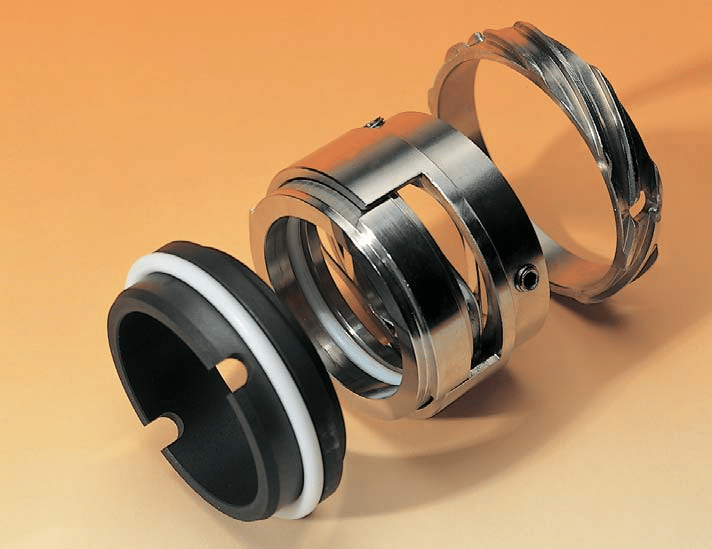
Despite its relative simplicity, the single-end face design still has some application value in some low-pressure, low-temperature, or non-harsh condition applications. However, in some cases of high pressure, high temperature, toxic or flammable media, the double-face design is often more common because it provides higher sealing performance and safety.
Double-spring mechanical seal
This seal type has sealing rings and springs on both sides to provide better sealing performance for more demanding applications such as high pressure and high temperature environments.
The double face design is a type of mechanical seal design that incorporates two sealing rings on each side of the shaft, one for the driving end and the other for the driven end. These two sealing rings each form a sealing interface with an opposing stationary component (e.g., the seal housing) to prevent liquid or gas leakage.
The double-face design utilizes more sealing elements relative to the single-face design to provide higher sealing performance and reliability. This design is typically used in applications that require more stringent sealing requirements, especially with high pressure, high temperature, toxic or flammable media.
One of the advantages of the double-face design is that where rotary motion is required in pumps or other equipment, the double-face design can better maintain sealing performance because the seals on both sides work effectively regardless of shaft rotation.
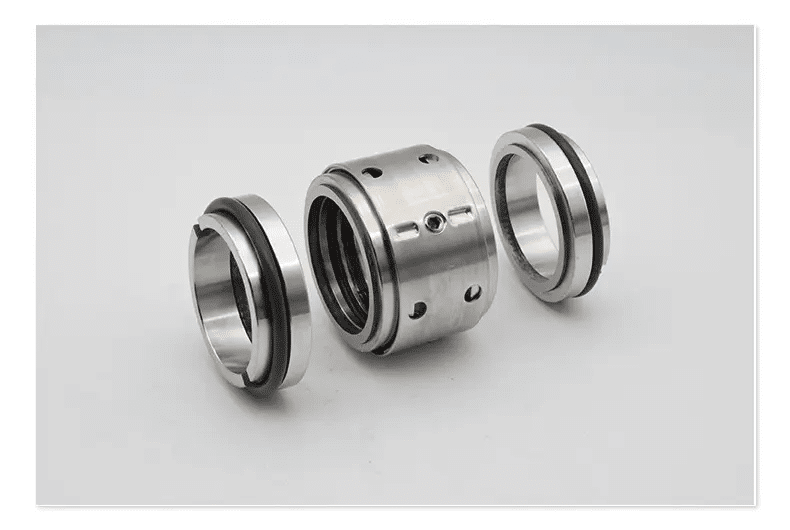
Internal mechanical seal
This seal type is typically used in liquid handling equipment, such as agitators and centrifuges, to prevent leakage of liquid into the bearing end of the equipment.
External mechanical seal
External mechanical seal is usually installed outside the equipment, used to separate the sealing device from the shaft, suitable for some high temperature, high pressure or corrosive liquid environment.
Cartridge mechanical seal
This type of seal is pre-assembled in a seal housing for easy installation and maintenance and is suitable for situations where frequent replacement is required.
Wave spring mechanical seal
This seal uses a wave spring as the source of sealing force and is suitable for some smaller equipment or limited space applications.
Categorized by specific applications
- Magnetic Mechanical Seal: Uses the principle of magnetism to separate the sealing rings, reducing friction and wear.
- Temperature Rise Mechanical Seal: Takes into account the temperature rise between the shaft and the seal ring to avoid unnecessary heat and loss.
What kind of mechanical seal is suitable for pneumatic diaphragm pumps?
Air operated diaphragm pumps are usually suitable for relatively simple sealing requirements, as their operating principle and design enable them to achieve good sealing performance under some specific conditions. The following are the types of mechanical seals suitable for air operated diaphragm pumps:
| Mechanical Seal Type | Applicability |
| Single Face Mechanical Seal | Suitable for pneumatic diaphragm pumps under low pressure, low temperature, and non-stringent conditions(KES15/20 1/2″ 3/4″ Plastic Diaphragm Pump). |
| Elastic Element Design | Achieves sealing to a certain extent by using elastic elements such as bellows, suitable for some pneumatic diaphragm pumps. |
| Bellows Design | Some pneumatic diaphragm pumps use bellows as sealing elements, providing a certain level of axial compensation capability(KES40 1.5″ Plastic Diaphragm Pump). |
| Packing Design | In certain pneumatic diaphragm pumps, packing can serve as a secondary sealing element, reducing liquid leakage(KES15/20 1/2″ 3/4″ Metal Diaphragm Pump). |
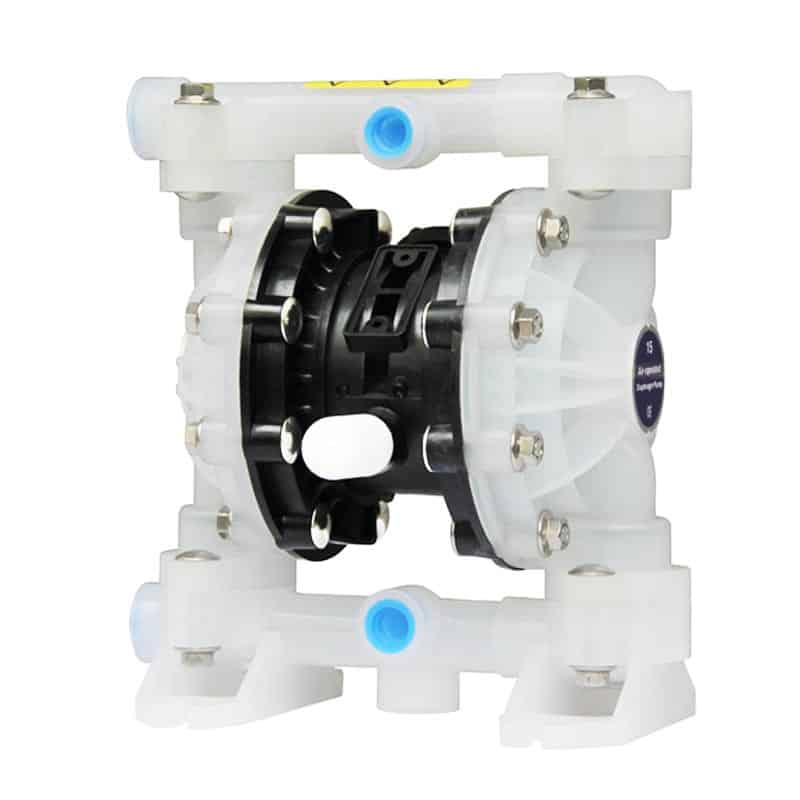

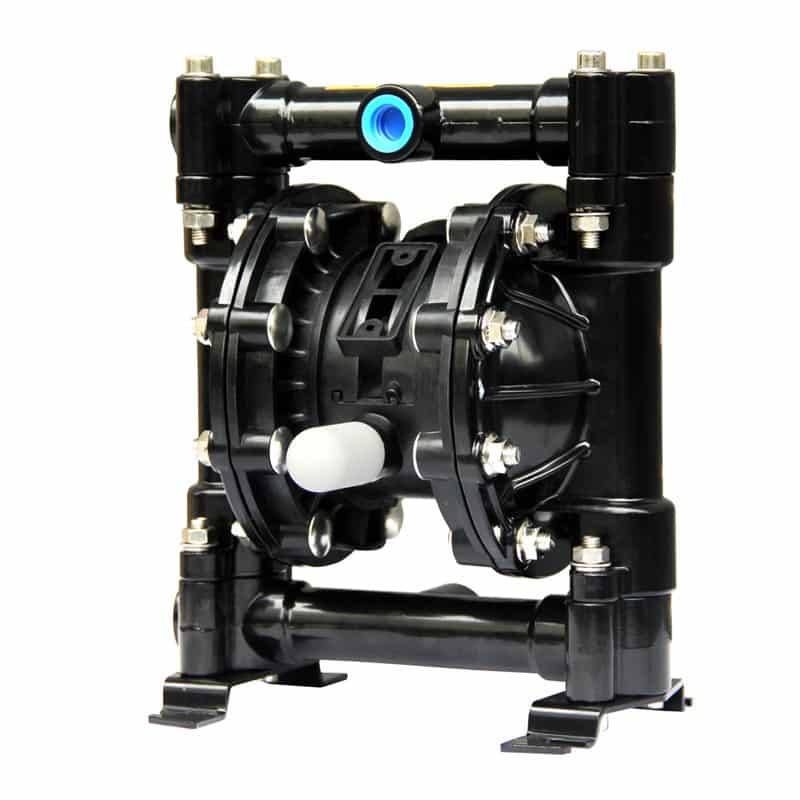
It should be noted that pneumatic diaphragm pumps are usually suitable for some special working conditions and media, such as corrosive liquids, high-viscosity liquids or media with solid particles in suspension. The selection of mechanical seals should be based on the actual working environment, fluid properties and sealing requirements to ensure the performance and reliability of the pump. When selecting mechanical seals, it is recommended to consult with manufacturers or professionals to ensure that the right sealing solution is selected.
Where is the mechanical seal mounted on the air operated diaphragm pump?
In an air operated diaphragm pump, mechanical seals are typically used to enclose the bearings at the driving and driven ends of the pump. Specifically, mechanical seals are typically installed in the following locations in air operated diaphragm pumps:
- Drive end (drive side): This is the pneumatic part of the air operated diaphragm pump, which sends air or gas through the air source into the diaphragm chamber to make the liquid flow in the pump. In the bearing position of the driving end, a mechanical seal is usually installed to prevent gas or liquid from leaking to the external environment.
- Driven end (liquid side): In the bearing position of the driven end, a mechanical seal is likewise installed to prevent liquid leakage into the pneumatic section and to maintain gas-liquid isolation of the diaphragm chamber.
The purpose of a mechanical seal is to provide an effective seal between the driving and driven ends of an air operated diaphragm pump, preventing gas or liquid leakage. This is important to maintain the reliability, performance and safety of the pump. It is important to note that specific mechanical seal installation locations may vary depending on the air operated diaphragm pump model and manufacturer.

Air operated diaphragm pump mechanical seal common problems and solutions
| Problem | Possible Causes | Solutions |
| Leakage | Seal ring damage, loose cover, spring failure, unsuitable materials, etc. | Replace damaged sealing components, ensure tight fastening of the cover, select suitable materials for the medium. |
| Sealing interface wear | Friction, wear, solid particles, etc. | Regular maintenance and inspection, use wear-resistant materials suitable for the medium, reduce the impact of solid particles. |
| Seal ring jamming | Seal ring getting stuck on the shaft due to material expansion or deformation | Use appropriate materials, ensure compatibility between the seal ring and the shaft, avoid over-tightening of the cover. |
| Seal ring wear | High-speed friction, unsuitable materials, etc. | Choose wear-resistant materials, reduce friction, ensure the supply of lubricating fluids. |
| Spring failure | Loose or damaged spring, etc. | Regularly maintain and inspect springs, ensure their normal operation. |
| Leakage | Poor design, assembly errors, improper operation, etc. | Ensure correct mechanical seal installation and operation, follow manufacturer’s guidance and recommendations. |
| Seal failure due to temperature fluctuations | Thermal expansion and contraction due to temperature changes | Choose materials suitable for the temperature range, consider the impact of temperature changes on the seal. |
| Gas leakage | Loose cover, unsuitable materials, etc. | Ensure tight fastening of the cover, select materials suitable for gas properties. |
Summary
In short, as an integral part of modern industrial equipment, mechanical seals play an important role in protecting equipment, improving efficiency and safety. When selecting and using mechanical seals, you need to make reasonable selection and maintenance according to specific application scenarios, media nature and working conditions to ensure the reliability and durability of the equipment.
We carry a wide range of AODD pumps and fluid handling products and solutions, offering AODD pump, EODD Pump, Double Diaphragm Pump, Sanitary Diaphragm Pump, Filter Press Feed Pump, Progressive Cavity Pump, Parts & Accessories to ensure your success, welcome to contact us.
Extended reading
What Is A Progressive Cavity Pump?
Process Pump
Reciprocating Pump

